In Development this week (Vol. 141, Issue 17)
Posted by Seema Grewal, on 19 August 2014
Here are the highlights from the current issue of Development:
HSCs make a Runx1 for it
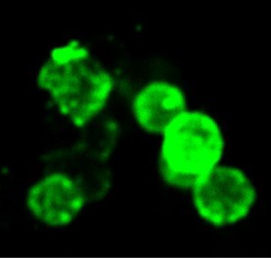 The emergence of haematopoietic stem cells (HSCs) during early mammalian development is crucial for the formation of all blood cell lineages. Previous studies indicate that Runx1 is required for the endothelial-haematopoietic transition that gives rise to definitive HSCs; however, this transition occurs in multiple steps and the precise stage at which Runx1 is required has been unclear. In this issue (p.3319), Alexander Medvinsky and colleagues define the exact point during murine HSC emergence at which Runx1 is required. Using a conditional reversible knockout strategy, the authors show that a deficiency of Runx1 does not affect commitment to the haematopoietic lineage as marked by the expression of CD41, as Runx1 knockout embryos still contain a population of CD41+ cells that can form HSCs when Runx1 expression is restored. However, the absence of Runx1 blocks progression to the next stage of HSC emergence, as marked by the expression of CD45. These results demonstrate a precise, stage-specific role for Runx1 in the molecular regulation of HSC emergence during embryo development.
The emergence of haematopoietic stem cells (HSCs) during early mammalian development is crucial for the formation of all blood cell lineages. Previous studies indicate that Runx1 is required for the endothelial-haematopoietic transition that gives rise to definitive HSCs; however, this transition occurs in multiple steps and the precise stage at which Runx1 is required has been unclear. In this issue (p.3319), Alexander Medvinsky and colleagues define the exact point during murine HSC emergence at which Runx1 is required. Using a conditional reversible knockout strategy, the authors show that a deficiency of Runx1 does not affect commitment to the haematopoietic lineage as marked by the expression of CD41, as Runx1 knockout embryos still contain a population of CD41+ cells that can form HSCs when Runx1 expression is restored. However, the absence of Runx1 blocks progression to the next stage of HSC emergence, as marked by the expression of CD45. These results demonstrate a precise, stage-specific role for Runx1 in the molecular regulation of HSC emergence during embryo development.
New player in neocortical neuron migration
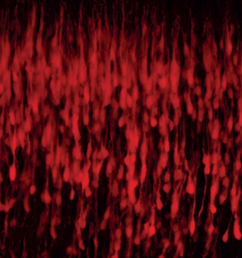 The formation of the mammalian neocortex relies on the migration of projection neurons into specific layers, which is in turn regulated by cyclin-dependent kinase 5 (Cdk5). Cdk5 has previously been shown to interact with the G protein-coupled receptor serotonin 6 receptor (5-HT6R); however, whether and how this interaction might be important for neocortical migration remains unclear. Now, on p.3370, Alexandre Dayer and colleagues use a range of knockdown and rescue in utero electroporation experiments in mouse to show that 5-HT6R regulates the migration of the upper layer cortical projection neurons via its interaction with Cdk5, rather than with serotonin or other agonists. Knockdown of 5-HT6R in postmitotic upper layer neurons impairs their migration and leads to their presence in deeper layers of the neocortex, while re-expression of the full-length receptor or a Cdk5 kinase rescues this defect. The interaction between Cdk5 and 5-HT6R specifically affects the transition between multipolar and bipolar morphology in immature migrating neurons and provides in vivo evidence for the role of a G protein-coupled receptor in neocortical neuron migration.
The formation of the mammalian neocortex relies on the migration of projection neurons into specific layers, which is in turn regulated by cyclin-dependent kinase 5 (Cdk5). Cdk5 has previously been shown to interact with the G protein-coupled receptor serotonin 6 receptor (5-HT6R); however, whether and how this interaction might be important for neocortical migration remains unclear. Now, on p.3370, Alexandre Dayer and colleagues use a range of knockdown and rescue in utero electroporation experiments in mouse to show that 5-HT6R regulates the migration of the upper layer cortical projection neurons via its interaction with Cdk5, rather than with serotonin or other agonists. Knockdown of 5-HT6R in postmitotic upper layer neurons impairs their migration and leads to their presence in deeper layers of the neocortex, while re-expression of the full-length receptor or a Cdk5 kinase rescues this defect. The interaction between Cdk5 and 5-HT6R specifically affects the transition between multipolar and bipolar morphology in immature migrating neurons and provides in vivo evidence for the role of a G protein-coupled receptor in neocortical neuron migration.
Sonic hedgehog all Ptch2 up
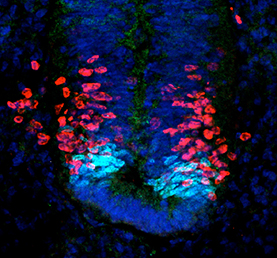 The sonic hedgehog (Shh) signalling pathway is a crucial mediator of cell proliferation, morphogenesis and fate, influencing the development and homeostasis of multiple organ systems during all stages of life. A central premise of Shh signalling is that the receptor patched 1 (Ptch1) mediates the Shh response, and that this response is greatest when Ptch1 is absent, allowing the release of pathway activator smoothened (Smo) and the eventual activation of Gli proteins. In this issue (p.3331), Henk Roelink and colleagues challenge this notion by showing that cells devoid of Ptch1 remain Shh responsive in both transcriptional and migrational assays. Furthermore, the authors demonstrate a role for patched 2 (Ptch2) in mediating the Shh response in the absence of Ptch1, since a response to Shh is seen in Ptch1–/– but not in Ptch1–/–;Ptch2–/– cells. These data are indicative of a complex relationship between Ptch1 and Ptch2 in their regulation of Smo activity in response to Shh.
The sonic hedgehog (Shh) signalling pathway is a crucial mediator of cell proliferation, morphogenesis and fate, influencing the development and homeostasis of multiple organ systems during all stages of life. A central premise of Shh signalling is that the receptor patched 1 (Ptch1) mediates the Shh response, and that this response is greatest when Ptch1 is absent, allowing the release of pathway activator smoothened (Smo) and the eventual activation of Gli proteins. In this issue (p.3331), Henk Roelink and colleagues challenge this notion by showing that cells devoid of Ptch1 remain Shh responsive in both transcriptional and migrational assays. Furthermore, the authors demonstrate a role for patched 2 (Ptch2) in mediating the Shh response in the absence of Ptch1, since a response to Shh is seen in Ptch1–/– but not in Ptch1–/–;Ptch2–/– cells. These data are indicative of a complex relationship between Ptch1 and Ptch2 in their regulation of Smo activity in response to Shh.
PLUS…
Semaphorin signalling during development
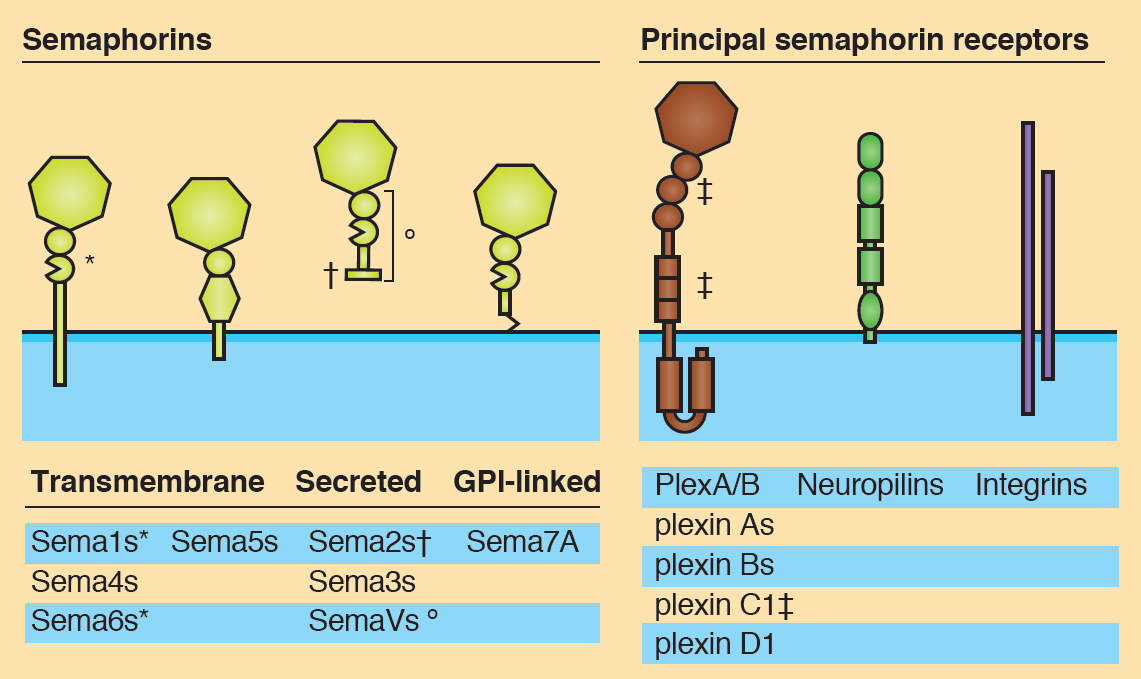 Semaphorins are secreted and membrane-associated proteins that regulate many cellular and developmental processes. In this article and accompanying poster, Jongbloets and Pasterkamp review the molecular biology of semaphorin signalling in different contexts. See the Review on p.3292
Semaphorins are secreted and membrane-associated proteins that regulate many cellular and developmental processes. In this article and accompanying poster, Jongbloets and Pasterkamp review the molecular biology of semaphorin signalling in different contexts. See the Review on p.3292
A cellular understanding of tissue separation
 The separation of the embryo into physically distinct regions is one of the most important processes in development. François Fagotto discusses various boundary formation models and summarizes recent studies that have examined this process at the cellular level. See the Review on p.3303
The separation of the embryo into physically distinct regions is one of the most important processes in development. François Fagotto discusses various boundary formation models and summarizes recent studies that have examined this process at the cellular level. See the Review on p.3303
Coordinating cell polarity: heading in the right direction?
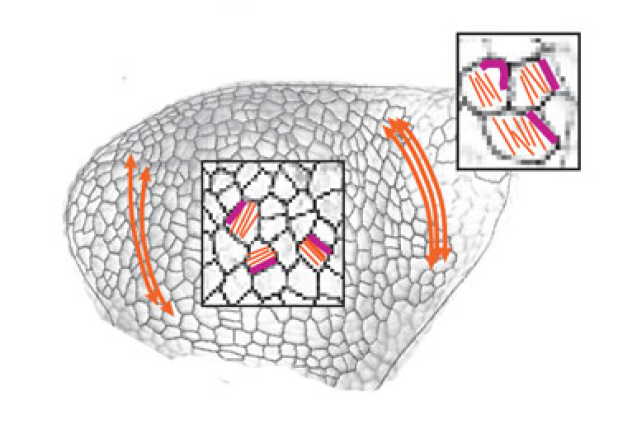 Jeffrey Axelrod and Dominique Bergmann report from The Company of Biologists workshop ‘Coordinating Cell Polarity’, which brought together researchers working on plant and animal systems to discuss the emerging themes in the field. See the Meeting Review on p.3298
Jeffrey Axelrod and Dominique Bergmann report from The Company of Biologists workshop ‘Coordinating Cell Polarity’, which brought together researchers working on plant and animal systems to discuss the emerging themes in the field. See the Meeting Review on p.3298


 (1 votes)
(1 votes)